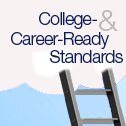Eight organizations issued a joint call Tuesday for a “transformation” of career and technical education, so that K-12, higher education and the business world are deeply engaged in providing meaningful career-related study for students.
“Putting Learner Success First: A Shared Vision for the Future of CTE” arose from a three-day summit in Orlando in October 2015, that brought together national, state and local players in the field to reimagine the path forward for the fast-growing world of career and technical education.

The last major vision statement issued collectively by the CTE field, “Reflect, Transform, Lead,” was six years ago. It focused heavily on the need to develop learning frameworks and policies to support career and tech ed. The new vision statement zeroes in on the students themselves, and outlines what policymakers, educators and industry must do to deliver quality programs for them.
It’s organized around five principles, with action steps outlined for each one. Here are a few highlights; see the paper for a fuller discussion.
- All CTE programs are held to the highest standards of excellence. Despite good progress improving the quality of CTE programming, poor-quality programs persist in too many places, the groups say. To “eradicate the negative stereotypes and realities” of CTE programs, those shaping the programs must have “an unwavering commitment” to high standards of quality. Rigorous review processes, and funding linked to program quality, are key steps to achieving this goal, according to the paper. New systems must also be developed to enable employers to help shape—and validate—the programs.
- All learners are empowered to choose a meaningful education and career. Here the groups don’t mince words about the need for a strong, thorough career-advising system for students (something that is often a weak link in middle and high schools). It must start in elementary school and extend through high school, and let all students—not just those in CTE programs—explore a wide range of goals and interests, the statement says. That system must also provide real-world work/learning experiences for those students, it said.
- All learning is personalized and flexible. The paper envisions a fusion of academics with CTE that takes place in classrooms and outside them. Creating competency-based systems to take a CTE student from high school into higher education—rather than stumbling over the accumulation of Carnegie units—is important to accomplishing this, the paper says.
- All learning is facilitated by knowledgeable experts. The eight groups call for deep changes in thinking about who should teach career-tech courses, something that’s bound to challenge parts of the education community. Teacher certification must be updated to include requirements that teachers can integrate academic and career skills, and to facilitate certification of instructors from industry, the paper says.
- All systems work together to put learner success first. K-12 and higher education must be able to work well with workforce development and industry to ensure quality, seamless programs, the paper says. That kind of coordination isn’t common; but the paper calls for states to outline ways to change policy and practice so this can happen. The eight groups urge states to adopt career-readiness indicators in their accountability systems.
The eight organizations that collaborated to produce the vision paper are Advance CTE, the Association for Career and Technical Education, the Council of Chief State School Officers, the National Association of State Boards of Education, the National Council of State Directors of Community Colleges, the National Governors Association, the National Skills Coalition, and the U.S. Chamber of Commerce Foundation.
